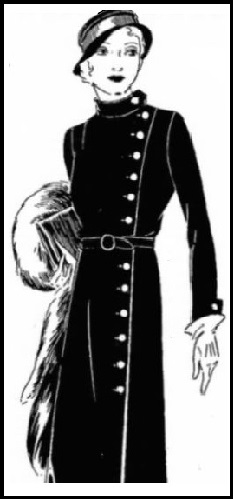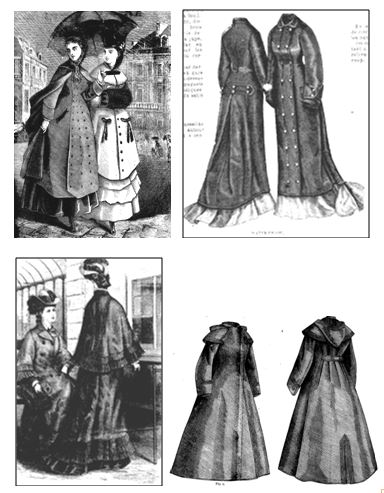MADAME WEIGEL'S PATTERNS IN JULY
3 Jul 2015 11:08 AMVeronica LampkinMid-Winter for Madame Weigel
Whoever wrote the lead article in Weigel’s Journal of Fashion in July 1914 didn’t mince words, and it wasn’t Madame Weigel as she was overseas. The monthly fashion summary started with:
Grey, dull, fretful skies, cold, pitiless winds, damp earth, and drenching rains is the portion July is commissioned to administer to her weather-helpless subjects in this part of the globe ... The warmly dressed, well-shod woman is the woman who scores this month, out of doors.
So what was needed? The article advised avoidance of the grotesque fashions emerging from the most fashionable centres of Paris, and with the common sense used by ‘women of the Commonwealth and Dominion’, withstand the absurdities and eccentricities of dress from the old world.
Over the decades, Weigel’s Journal of Fashion left readers in no doubt about what was needed in July: sensible clothes and shoes, comfortable styles, warmer fabrics including woollens, velvets, serges, furs, and fur fabrics. The overseas winter, ahead of the Antipodean winter, advised of what lay in store for fashion, including the ball gowns, dinner dresses, ceremonious costumes, and visiting toilettes. In the home, Weigel’s journal gave some timely advice on winter comforts in July 1909: rooms needed to be rearranged with heavy curtains for windows, curtains for doors, eiderdown quilts, and screens for draughty corners. It was time to put away muslin curtains, fly proof crockery curtains, and mosquito nets, those items useful in warmer weather.
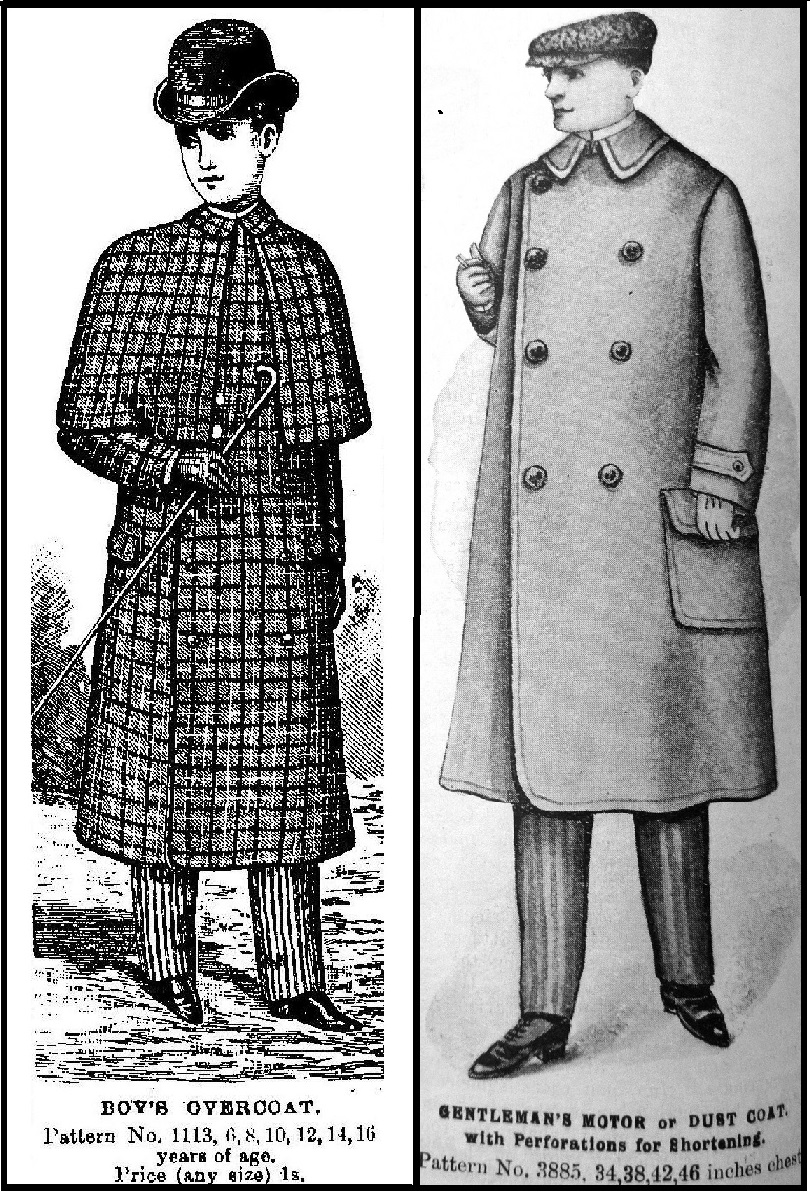 Two typical winter patterns for men and boys were Pattern 1113: Boy’s Overcoat and Pattern 3885: Gentleman’s Motor or Dust Coat. The boy’s overcoat was issued in April 1889 giving time to make the garment up before winter, then later repeated in July of that year; the man’s coat pattern was issued in July 1914 and seen as ‘useful’, with a tweed fabric making a warm overcoat.
Two typical winter patterns for men and boys were Pattern 1113: Boy’s Overcoat and Pattern 3885: Gentleman’s Motor or Dust Coat. The boy’s overcoat was issued in April 1889 giving time to make the garment up before winter, then later repeated in July of that year; the man’s coat pattern was issued in July 1914 and seen as ‘useful’, with a tweed fabric making a warm overcoat.
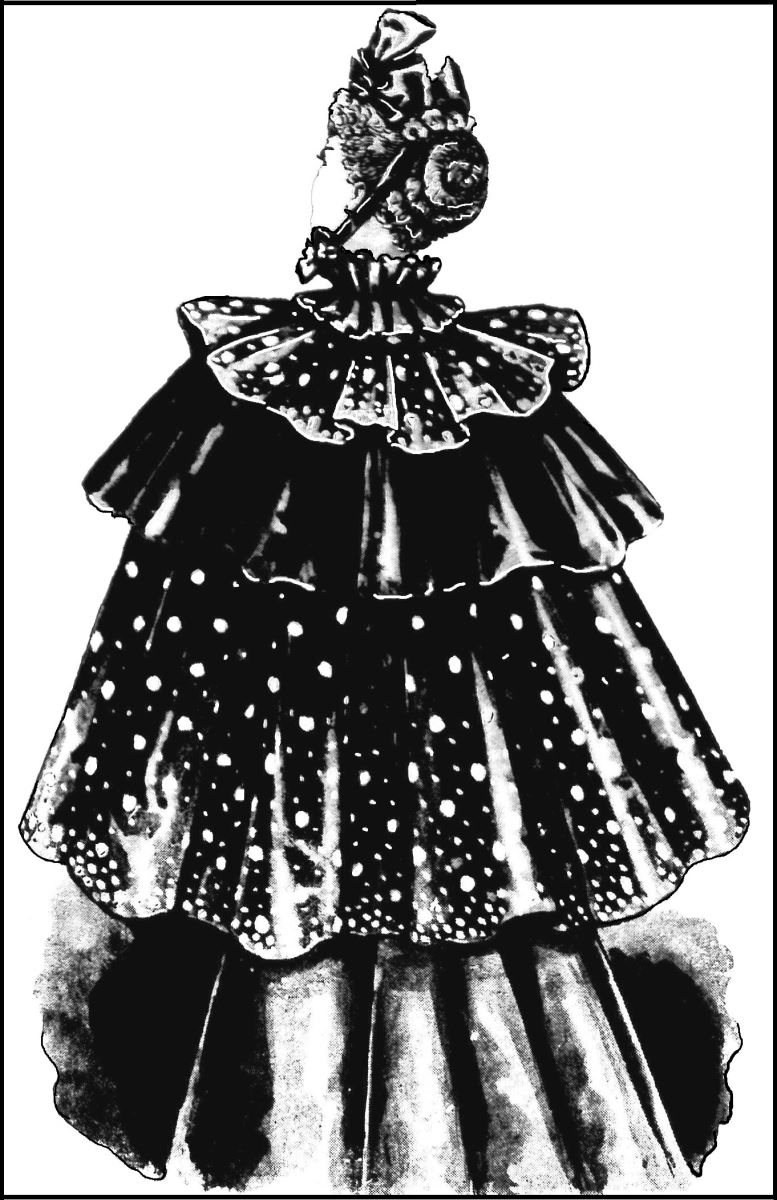 For women, one winter recommendation in the 1880s and 1890s was the cape, useful to put over a dress to keep warm. As Madame Weigel toured Europe in the 1890s she reported on the fashions seen there, including the triple skirt of which she had sent back a model to inform those looking after her business in Melbourne. She had noted that double and triple capes were popular there, and shortly afterwards some patterns were issued in Weigel’s Journal of Fashion that included triple layers and triple trimmings on capes, bodices and skirts. Typical was Pattern 1534: Lady’s Full Triple Cape, issued in July 1893 and noted as one of the new shapes.
For women, one winter recommendation in the 1880s and 1890s was the cape, useful to put over a dress to keep warm. As Madame Weigel toured Europe in the 1890s she reported on the fashions seen there, including the triple skirt of which she had sent back a model to inform those looking after her business in Melbourne. She had noted that double and triple capes were popular there, and shortly afterwards some patterns were issued in Weigel’s Journal of Fashion that included triple layers and triple trimmings on capes, bodices and skirts. Typical was Pattern 1534: Lady’s Full Triple Cape, issued in July 1893 and noted as one of the new shapes.
As the decades passed for Madame Weigel, one of her personal passions came to the fore: she loved furs, and had often mentioned them in her writing.
From April 1932, Pattern 5808: Lady’s & Maid’s Jacket was another pattern issued just before winter to allow time for sewing. This ‘practical and up-to-date little jacket’ could be made up in fur fabric, a popular development during the decade. Alternatively, the jacket could use a fur scarf as an accessory. Just two months later in July 1932, Pattern 5840: Lady’s & Maid’s Dress, Russian Closing showed a smart fur pelt as accessory.
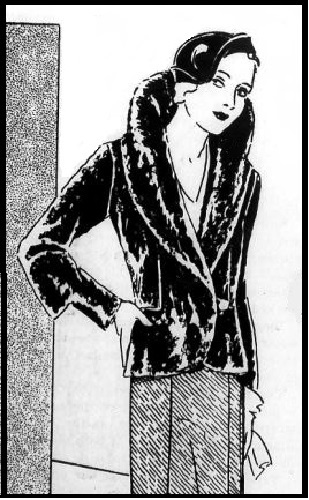
Pattern 5808: Lady’s & Maid’s Jacket, issued in April 1932
Pattern 5840: Lady’s & Maid’s Dress, Russian Closing, issued in July 1932
As for winter rain, such weather did not feature strongly in the more transseasonal Antipodean setting for Madame Weigel’s patterns. Madame Weigel issued few patterns specifically for rainwear, with Pattern 4509: Lady’s Raincoat in April 1920 a rare example. Overseas, northern hemisphere journals focussed on wet weather far more, as shown by the adjacent examples from the American Godey’s Lady’s Book and Harper’s Bazar, the French La Mode Illustree. These early examples of patterns for home sewn rainwear show just how embedded the need was in wetter climates.
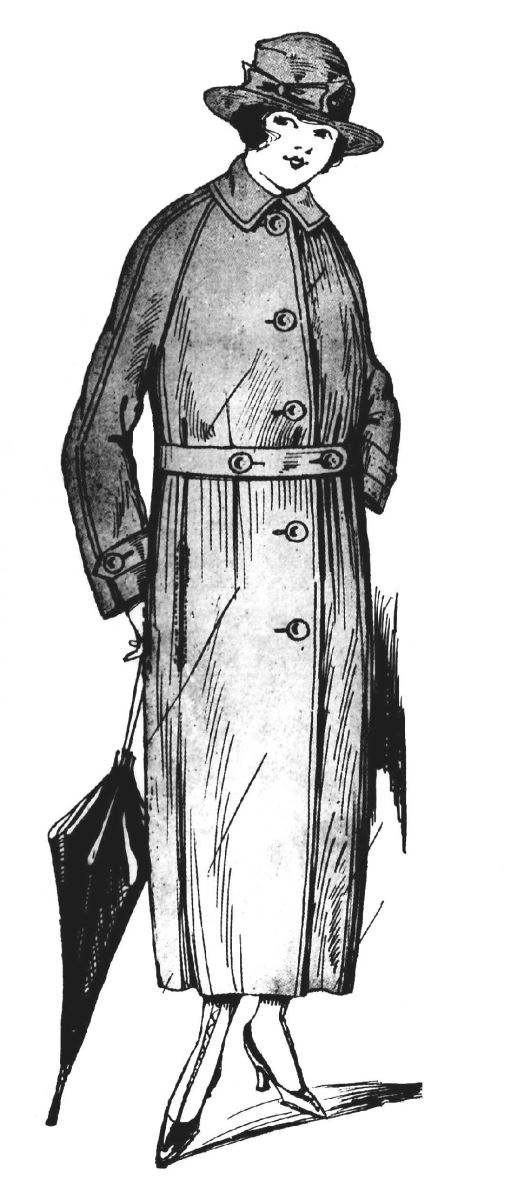
Pattern 4509: Lady’s Raincoat, issued in Madame Weigel's Journal of Fashion, April 1920
Costumes for a wet day. Godey’s Lady’s Book. December 1872, 483
Water-proof. La Mode Illustree. 16 December 1877, 397
Waterproof Cloak. Harper’s Bazar. 2 June 1877, 344
Front and back of Moblot waterproof cloak for lady. Godey’s Lady’s Magazine. April 1872, extension sheet, side 2; 394

